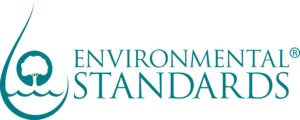Aerosol cans have many different applications throughout industrial facilities, commercial operations, and households. In 2016, The Household & Commercial Products Association estimated that 3.75 billion aerosol cans were filled in the United States. And for the most part, the waste aerosol cans were managed as a hazardous waste, either due to the type of propellant, the contents of the can, or the pressurized can itself. The US EPA has added waste aerosol cans to the universal waste rule as part of the broader Resource Conservation and Recovery Act (RCRA) regulations. In a statement about the new rule, the US EPA said, “The streamlined universal waste regulations are expected to ease regulatory burdens on retail stores and others that discard hazardous waste aerosol cans; promote the collection and recycling of these cans; and encourage the development of municipal and commercial programs to reduce the quantity of these wastes going to municipal solid waste landfills or combustors.” The final rule went into effect February 7, 2020.
Is this new rule applicable to you?
This regulatory change is applicable to those persons or organizations who generate, transport, treat, recycle, or dispose of hazardous waste aerosol cans. According to the US EPA, the retail and manufacturing industries are expected to be the most affected by the new rule because they generate the largest amount of aerosol cans and universal waste. More than 25,000 industrial facilities in 20 different industries within the North American Industry Classification System (NAICS) are expected to benefit from the new rule. About one-third of these facilities are large-quantity generators (LQGs), which undergo stricter requirements than small-quantity generators (SQGs) and very small-quantity generators (VSQGs). If you operate in California, Colorado, New Mexico, Ohio, or Utah, you may already be ahead of the game. These states already have universal waste aerosol can programs in place.
What does this change mean?
For SQGs and LQGs, this change equates to a decreased burden as it relates to waste aerosol cans, including increased waste accumulation times and volumes, reducing specified training, and reducing internal inspections. The new rule includes the same standards that currently apply to other universal waste streams such as requirements for storage, labeling and marking, preparing the waste for shipment off site, training, accumulation time, response to releases, and management of universal waste shipments. In addition to minimizing the management burden, the new rule provides more clarity around those who wish to puncture their aerosol cans and recycle the can itself as scrap metal.
One area where generators may potentially see a change to their current programs, is if the volume of universal waste increases enough to change their status from Small-quantity Handlers of Universal Waste (SQHUWs) to Large-quantity Handlers of Universal Waste (LQHUWs). LQHUW refers to those that handle more than 5,000 kilograms (kg) of total universal waste at one time, and SQHUW refers to those that handle 5,000 kg or less of universal waste at one time. Those who are LQHUWs have additional responsibilities for universal waste management, including obtaining a US EPA identification number, retaining shipping records, and conducting more extensive employee training.



